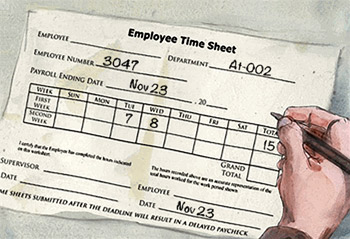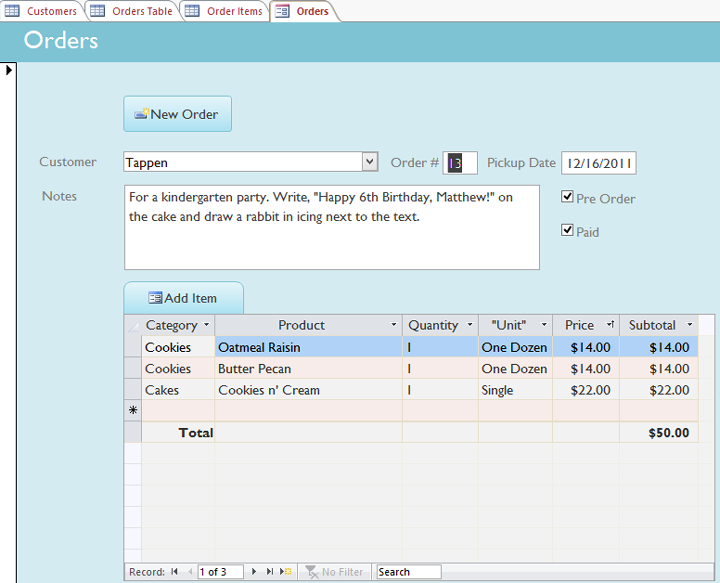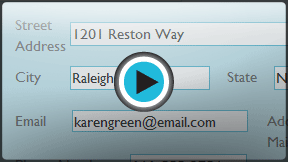Access 2013
Working with Forms
Introduction
While you can always enter data directly into database tables, you might find it easier to use forms. Forms ensure you're entering the right data in the right location and format. This can help keep your database accurate and consistent.
This lesson will address the benefits of using forms in a database. You will review examples of different forms and form components. Finally, you will learn how to use forms to enter new records and view and edit existing ones.
Throughout this course, we will be using a sample database. If you would like to follow along, you'll need to download our Access 2013 sample database. You will need to have Access 2013 installed on your computer in order to open the example.
Why use forms?
Many of us fill out forms so often that we hardly notice when we're asked to use them. Forms are so popular because they're useful for both the person asking for the information and the person providing it. They are a way of requiring information in a specific format, which means the person filling out the form knows exactly which information to include and where to put it.
 Filling out a paper form
Filling out a paper formThis is just as true of forms in Access. When you enter information into a form in Access, that data goes exactly where it's supposed to go—into one or more related tables. While entering data into simple tables is fairly straightforward, data entry becomes more complicated as you start populating tables with records from elsewhere in the database. For instance, the orders table in a bakery's database might link to information about customers, products, and prices drawn from related tables. For example, in the Orders Table below the Customer ID field is linked to the Customers table.
 The Customer ID field links to the Customers table
The Customer ID field links to the Customers tableIn fact, in order to see the entire order, you would also have to look at the order items table, where the menu items that make up each order are recorded.
 The Order ID field links to the Orders table, and the Menu Item ID field links to the Menu Items table
The Order ID field links to the Orders table, and the Menu Item ID field links to the Menu Items tableThe records in these tables include ID numbers of records from other tables. You can't learn much just by glancing at these records because the ID numbers don't tell you much about the data they relate to. Plus, because you have to look at two tables just to view one order you might have a difficult time even finding the right data. It's easy to see how viewing or entering many records this way could become a difficult and tedious task.
A form containing the same data might look like this:
 The same order viewed in a form
The same order viewed in a formAs you can see, this record is much easier to understand when viewed in a form. Modifying the record also would be easier, since you wouldn't have to know any ID numbers to enter new data. When you're using a form, you don't have to worry about entering data into the right tables or in the right format—the form can handle these things itself. There's no need to go back and forth between tables, because forms bring all of the information you need together in one place.
Not only do forms make the data entry process easier for the user, but they also keep the database itself working smoothly. With forms, database designers can control exactly how users are able to interact with the database. They can even set restrictions on individual form components to ensure all of the needed data is entered and that it's all entered in a valid format. This is useful, because keeping the data consistent and well organized is essential for an accurate and powerful database.







